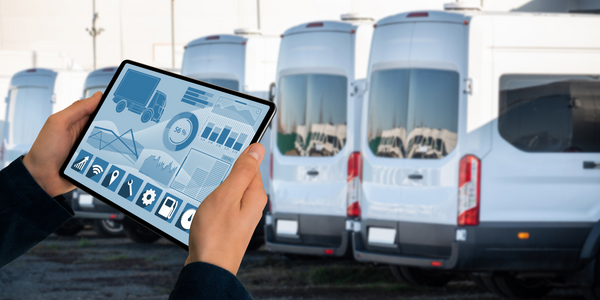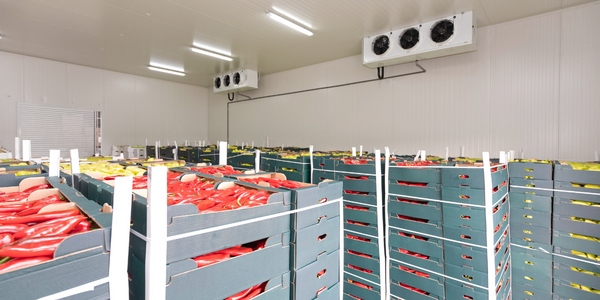Technology Category
- Functional Applications - Transportation Management Systems (TMS)
- Networks & Connectivity - Gateways
Applicable Industries
- Education
- Transportation
Applicable Functions
- Logistics & Transportation
Use Cases
- Autonomous Transport Systems
- Transportation Simulation
Services
- System Integration
- Training
About The Customer
JMS Transportation is a family-run trucking and logistics business based in Cedar Rapids, Iowa. For over 30 years, the company has been committed to exceeding customer expectations, upholding the Midwestern values of service, accountability, and value. The company operates a fleet of over 100 vehicles and around 800 trailers. Prior to implementing Motive's solutions, JMS Transportation was struggling with the impending ELD mandate, inefficient driver safety and coaching practices, and difficulties in tracking their large number of trailers.
The Challenge
JMS Transportation, a family-run trucking and logistics business, was facing a significant challenge as the ELD mandate was about to go into effect. Their original provider wanted them to purchase new hardware and undergo a time-consuming installation process. This was not feasible for JMS Transportation as 90% of their drivers were owner-operators. Additionally, the company was struggling with driver safety and coaching. Without the use of dash cams, they had to manually pull telematics reports every morning and coach drivers on events from the previous day. This reactive approach was inefficient and failed to prevent one or two accidents every month. Furthermore, the company was having difficulty tracking their large number of trailers, which was affecting their asset management.
The Solution
JMS Transportation switched to Motive electronic logging devices (ELDs), which were easy to install and use. Unlike their previous provider, Motive alerted drivers to ELD violations before they occurred, allowing drivers to take corrective action and prevent HOS violations. JMS Transportation also invested in Motive Smart Dashcams and later upgraded to road-facing Motive AI Dashcams. This technology provided in-cab alerts, making drivers more aware of their driving habits. To solve their asset management problem, JMS Transportation invested in Motive Asset Gateways. This allowed them to track their trailers and get accurate reports when they were sitting idle for too long. The company also benefited from Motive's managed service, which saved time by automatically uploading the most impactful events for review. This allowed JMS Transportation to focus exclusively on drivers who needed coaching.
Operational Impact
Quantitative Benefit

Case Study missing?
Start adding your own!
Register with your work email and create a new case study profile for your business.
Related Case Studies.

Case Study
Airport SCADA Systems Improve Service Levels
Modern airports are one of the busiest environments on Earth and rely on process automation equipment to ensure service operators achieve their KPIs. Increasingly airport SCADA systems are being used to control all aspects of the operation and associated facilities. This is because unplanned system downtime can cost dearly, both in terms of reduced revenues and the associated loss of customer satisfaction due to inevitable travel inconvenience and disruption.

Case Study
IoT-based Fleet Intelligence Innovation
Speed to market is precious for DRVR, a rapidly growing start-up company. With a business model dependent on reliable mobile data, managers were spending their lives trying to negotiate data roaming deals with mobile network operators in different countries. And, even then, service quality was a constant concern.

Case Study
Digitize Railway with Deutsche Bahn
To reduce maintenance costs and delay-causing failures for Deutsche Bahn. They need manual measurements by a position measurement system based on custom-made MEMS sensor clusters, which allow autonomous and continuous monitoring with wireless data transmission and long battery. They were looking for data pre-processing solution in the sensor and machine learning algorithms in the cloud so as to detect critical wear.

Case Study
Cold Chain Transportation and Refrigerated Fleet Management System
1) Create a digital connected transportation solution to retrofit cold chain trailers with real-time tracking and controls. 2) Prevent multi-million dollar losses due to theft or spoilage. 3) Deliver a digital chain-of-custody solution for door to door load monitoring and security. 4) Provide a trusted multi-fleet solution in a single application with granular data and access controls.

Case Study
Vehicle Fleet Analytics
Organizations frequently implement a maintenance strategy for their fleets of vehicles using a combination of time and usage based maintenance schedules. While effective as a whole, time and usage based schedules do not take into account driving patterns, environmental factors, and sensors currently deployed within the vehicle measuring crank voltage, ignition voltage, and acceleration, all of which have a significant influence on the overall health of the vehicle.In a typical fleet, a large percentage of road calls are related to electrical failure, with battery failure being a common cause. Battery failures result in unmet service agreement levels and costly re-adjustment of scheduled to provide replacement vehicles. To reduce the impact of unplanned maintenance, the transportation logistics company was interested in a trial of C3 Vehicle Fleet Analytics.

Case Study
3M Gains Real-Time Insight with Cloud Solution
The company has a long track record of innovative technology solutions. For example, 3M helps its customers optimize parking operations by automating fee collection and other processes. To improve support for this rapidly expanding segment, 3M needed to automate its own data collection and reporting. The company had recently purchased the assets of parking, tolling, and automatic license plate reader businesses, and required better insight into these acquisitions. Chad Reed, Global Business Manager for 3M Parking Systems, says, “With thousands of installations across the world, we couldn’t keep track of our software and hardware deployments, which made it difficult to understand our market penetration.” 3M wanted a tracking application that sales staff could use to get real-time information about the type and location of 3M products in parking lots and garages. So that it could be used on-site with potential customers, the solution would have to provide access to data anytime, anywhere, and from an array of mobile devices. Jason Fox, Mobile Application Architect at 3M, upped the ante by volunteering to deliver the new app in one weekend. For Fox and his team, these requirements meant turning to the cloud instead of an on-premises datacenter. “My first thought was to go directly to the cloud because we needed to provide access not only to our salespeople, but to resellers who didn’t have access to our internal network,” says Fox. “The cloud just seemed like a logical choice.”







